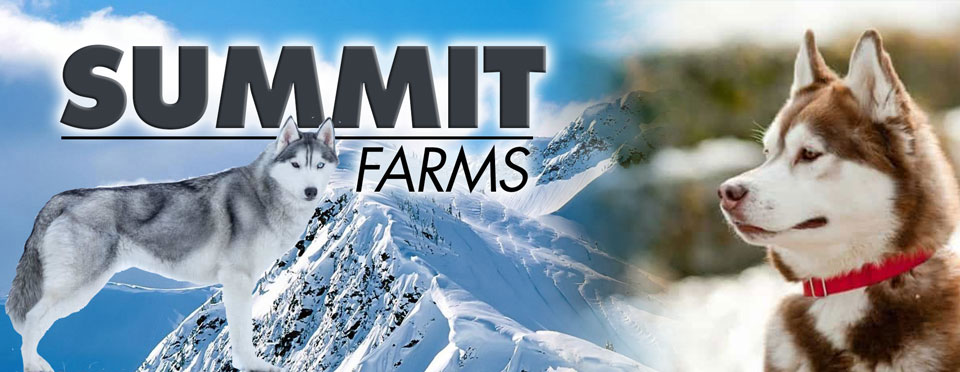How to Care For Each Breed!
Alaskan Husky
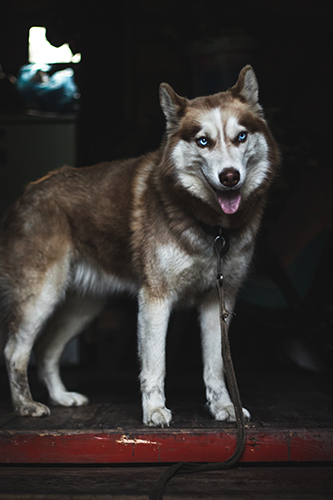
- Height; 23 to 26 in.
- Weight; 40 lbs. to 60 lbs.
- Life Expectancy; 10 to 15 years
- Food/Diet - Because the Alaskan Husky is a highly active breed, it is best to feed him a dog food formulated for active dogs. Follow the feeding instructions on the package but monitor your dog to see if the amount of food is adequate for his needs. If he appears to lose weight or energy, you may need to increase his daily ration.
- Ease of Training - Because the Alaskan Husky is a highly intelligent breed, he typically responds well to training. Start training your husky as early as possible to head off the development of problem behaviors – if you wait too long to start training your dog could become willful or headstrong. Positive reinforcement training methods are recommended for this breed and it is best to keep your training sessions short and fun so your dog doesn’t get bored.
- Energy Level - The Alaskan Husky is a friendly and playful breed – he is also affectionate and loves to cuddle with his owner. These dogs do have a great deal of energy and require a good deal of daily exercise – a simple walk around the block will not be sufficient. In addition to physical exercise, these dogs also require a great deal of mental stimulation to keep them from getting bored. If your Alaskan Husky doesn’t get enough physical or mental stimulation, he is likely to develop problem behaviors. It is also important to note that these dogs can jump as high as 6 feet, so they need to be watched carefully when kept outside because they have a penchant for escaping.
- Grooming - The Alaskan Husky has a short- to medium-length coat that is self-cleaning like the coat of a Siberian Husky or an Alaskan Malamute. The coat sheds minimally except twice a year when the dog blows its coat. These dogs come in a variety of colors, either solid or multi-colored, with various shades of gray, black, and white. Some dogs exhibit brown, cream, or red coloration. Unlike the Siberian Husky, the Alaskan Husky has brown eyes.
Alaskan Malamute
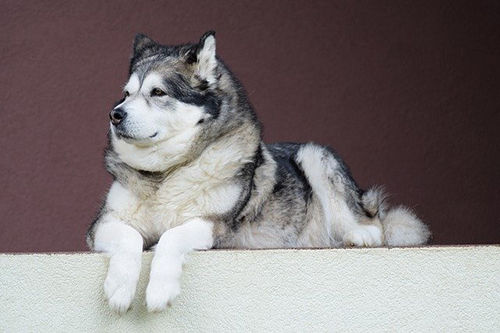
- Height; 23 to 25 in.
- Weight; 75 lbs. to 85 lbs.
- Life Expectancy; 12 to 15 years
- Food/Diet - If you’re going to feed your Alaskan Malamute a high-quality dry dog kibble, make sure that the first ingredient listed is meat. Feel free to mix up the flavors of the dog food – a variety of lamb, chicken, salmon or different ingredients is recommended. And you can supplement your Alaskan Malamute’s diet with fresh fruits and vegetables.
- Ease of Training - A highly intelligent breed, the Alaskan Malamute has excellent training qualities, including dependability, responsibility, cleverness, and high energy. This dog was bred for hauling and working hard, which makes them dependable and responsible, great qualities when it comes to training. Think of training as an energy outlet for this dog. Sign up for obedience training classes and your Alaskan Malamute will excel at them. Instead of formal training, try to make lessons fun, and involve other family members in the process. Since these dogs are very active, you’ll need to train your Alaskan Malamute as to how to behave and what is not considered acceptable behavior. Keep training positive and rewarding, and don’t use negative or harsh treatment to get the results you want. You may have a hard time housetraining your Alaskan Malamute. This breed tends to be hard to train in this area, so it will take added persistence and patience on your part to help your dog master this habit.
- Energy Level - An energetic dog, the Alaskan Malamute will need lots of attention and activities to keep it busy, healthy and out of trouble. Also known as an independent dog, it likes to be alone, but you will still find the Alaskan Malamute to be a loyal and devoted pet. Even if you have other animals in the house, it prefers its own company. The Alaskan Malamute is quiet, but it still makes an excellent watch dog… even though it’s too friendly to be a guard dog.
- Grooming - The Alaskan Malamute’s double coat consists of a woolly coat and a coat made of long guard hairs that are slightly coarse. Its coat is blown twice a year so expect excessive hair to fall out (sometimes in clumps). After a blowout, the Alaskan Malamute is considered to be a shed-free breed. As well, this breed odor free and will clean itself as often as a cat would. The colors of the Alaskan Malamute vary from a light gray to hues of sable or black, with sable to red shadings. When showing this dog, acceptable color combinations are found in its undercoats or trimmings, in addition to their points. The only solid color accepted is white, and broken colors extending over the body are considered unacceptable.
Alaskan Klee Kai

- Height; 13 to 15 in. at the withers
- Weight; 10 lbs. to 15 lbs.
- Life Expectancy; 12 to 15 years
- Ease of Training - Alaskan Klee Kais are intelligent and very keen to please their owners. They are quick to pick up basic instructions, and are not difficult to train. Commands should be taught in a consistent and patient manner.The Alaskan Klee Kai also does well in obedience and agility trials, and have also been used as therapy dogs in care homes.
- Energy Level - This is an alert and curious breed which is apprehensive of strangers. The Klee Kai will certainly bark to let you know that something is going on in the vicinity, so they make good watch dogs. When it comes to action, however, they are simply too small to deter a would-be intruder, nor to take action, despite their strong desire to protect their family. If you need a guard dog for protection, look for a bigger dog.
- Grooming - The Alaskan Klee Kai has a double-layer coat; a fine undercoat and a coarser outer coat. They will usually shed the undercoat twice a year, and this generates a lot of hair! They need daily brushing to remove the dead hairs, especially during shedding. Like all dogs, they also need their teeth brushing, ears inspecting for cleanliness, and claws clipping if they become too long, normally at the vet.
American Eskimo

- Weight; Depends on type: Toy- 6 to 10 lbs., Miniature- 10 to 17 lbs., Standard- 18 to 35 lbs
- Height; Depends on type: Toy- 9 to 12 in.,Miniature- 12 to 15 in., Standard- 15 to 19 in.
- Life Expectancy; 12-15 Years
- Ease of TrainingEase - The American Eskimo Dog is not known for presenting too much difficulty in the training process. These dogs are intelligent and have a high aptitude for learning. They are famous for their participation in obedience events due to their capabilities in executing tricks and commands. Their enthusiasm towards learning is only gained if their owner approaches it correctly, however. Consistent positive reinforcement for good behavior is always more effective than scolding for bad habits. These dogs, like many, are always easier to train when they are not competing for a position as head of the household. An American Eskimo Dog needs a confident owner who presents an air of superiority, or else they will try and assume the role as pack leader. Their independent personalities make this task a bit more difficult, however, if presented with an unwavering trainer, they are more likely to cooperate. Socialization is an important part of training any dog. Socializing from an early age will help dogs be more comfortable and calm as adults. Most owners will accomplish this by introducing their dog to a variety of people and pets, as well as taking them for frequent walks. Not only will this exercise the dog, but it will help them become accustomed to their environment and the presence of strangers. This is especially essential with this breed due to their vocal personality, as it will make them less noisy and nervous in response to something they find unusual.
- Energy Level - As you can imagine, a dog the size of the American Eskimo Dog will not fare too well when it comes to protecting you or your family from physical harm. Their physical build is simply not enough to stop an intruder, despite them most likely making a valiant attempt in doing so. On top of them being incapable of protecting their owner, they do not present an air of intimidation either. These small dogs are not likely to deter anyone from entering the property. Despite their inability to defend against an intruder, these dogs are accomplished at alerting their owners to one’s presence. These dogs are known for being fairly vocal about things they find unusual. They are known for being wary pets, and would be able to sense the presence of a stranger just walking past their home. If not guard dogs, they are capable of keeping watch. These dogs are only suited for giving a warning as well. Their personalities are typically warm towards strangers, as they have a friendly demeanor towards most people. An American Eskimo Dog should not be put in a position where they are to be an extra defensive measure, they simply don’t have that attitude towards people, as they are not very territorial dogs.
- Grooming -The American Eskimo Dog is famous for its dense, yet fluffy white coat. They shed year round, with heavier shedding when the seasons change from cold to hot weather, and vice versa. Most owners recommend brushing them at least 2-3 times a week to prevent matting and remove shed hair and dirt.
Siberian Husky

- Height; 20 to 24 in.
- Weight; 35 lbs. to 60 lbs.
- Life Expectancy; 12 to 15 years
- Food/Diet - Feeding a high-quality dog food is essential for the Siberian’s healthy skin and coat. Adjustments in the level of protein in the food is required for the working Siberian, based on the level of activity. In the summer months, a lower protein level may be appropriate, around 20 percent, while a dog working in harness in wintertime may need 32 percent protein. Monitor each individual Siberian, and adjust the amount and type of food as required. Be careful not to overfeed. Monitor the weight of each dog, and be selective about supplements.
- Ease of Training - All breeds benefit from early socialization, basic obedience training, and learning good manners, and the Siberian Husky is no exception. For those owners who want to work their dogs in harness, training for this requires hours of dedication and patience. There are several good books available on training for the trail that provide advice and information on getting started. The best approach is to make all training exercises fun for both dog and handler. Siberians are very social, and regularly need the company of their people or other dogs; they are not suited to being left alone all day. Most importantly, Siberians have an overwhelming desire to run, and they should be on leash or in a securely fenced-in area at all times and never allowed off lead.
- Energy Level - Siberians are active, athletic dogs who need a lot of exercise. They are a working breed and happiest when they have a function to perform. Regular exercise is important both physically and mentally, and doing activities together strengthens the bond between dog and owner. Siberians were bred to run and will do so at every opportunity; it is vital to keep the dog on a leash, in harness, or in a fenced yard at all times. There are several AKC-sponsored activities that can be enjoyed by dog and owners—rally, agility, and obedience are a few. A busy and active Siberian is a happy and healthy Siberian. This breed is also very adaptable, and for those who live in a more urban setting, daily walks or doggie play groups can provide great exercise.
- Grooming - Siberian Huskies are considered a “natural” breed. They are remarkably self-cleaning and often need only a few baths a year, unless being shown in conformation dog shows. Weekly brushings help keep the coat and skin in good condition. Siberians have a double coat—an undercoat, and guard hair. The undercoat is shed twice a year, and it is important to continually “rake out” the old coat, using a pin brush and metal comb. Pay close attention to the length of the nails, and keep them trimmed to prevent any foot problems. Siberians competing in conformation require a bit more selective grooming for the best presentation.
Samoyed
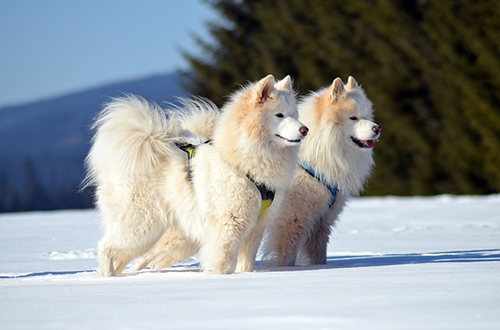
- Height; 19 to 24 in.
- Weight; 35 lbs. to 66 lbs.
- Life Expectancy; 12 to 14 years
- Food/Diet - The Samoyed should do well on a high-quality dog food, whether commercially manufactured or home-prepared with your veterinarian’s supervision and approval. Any diet should be appropriate to the dog’s age (puppy, adult, or senior). Some dogs are prone to getting overweight, so watch your dog’s calorie consumption and weight level. Treats can be an important aid in training, but giving too many can cause obesity. Learn about which human foods are safe for dogs, and which are not. Check with your vet if you have any concerns about your dog’s weight or diet. Clean, fresh water should be available at all times.
- Ease of Training - The Samoyede people lived in tents and huddled for warmth with their dogs on brutal Arctic nights. This unusual degree of dog-and-master closeness forged a tight bond between Sammies and humankind. A Sammy sentenced to solitary confinement in the backyard is a miserable—and destructive—creature. These are smart, social, mischievous dogs who demand love and attention. Sammies need a firm but loving hand in training.
- Energy Level - Samoyeds enjoy being with their people and participating in family activities. They need some daily exercise and enjoy play sessions with their owner in a safely fenced yard or long walks on leash. The breed has a strong urge to run away and roam, and if loose a Sammie might travel for miles, putting himself at risk.
- Grooming - The Samoyed has a profuse double coat, with a longer outer coat of harsh hair and a soft, thick, wooly undercoat. Samoyeds shed quite a bit all the time, even more so during shedding season, which can occur once or twice a year. Daily brushing will help to remove dirt and loose hairs and keep the dog looking his best. Mats or tangles can be worked out with a slicker brush or metal comb. The nails should be trimmed every three to four weeks or as needed.
Greenland
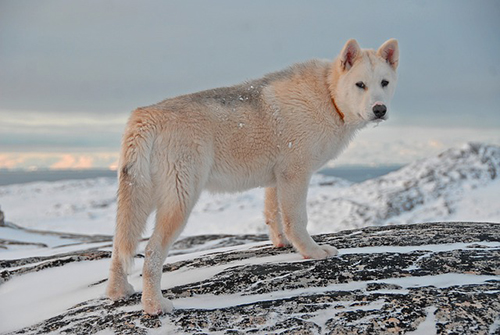
- Height; 20 to 27 in.
- Weight; 66 lbs. to 71 lbs.
- Life Expectancy; about 13 years
- Food/Diet - As a medium- to large-sized dog breed, the Greenland Dog should be fed a high-quality commercial dog food diet formulated for dogs of its size. Because this breed is a high-energy working breed, however, an active or working breed formula may be more appropriate to meet his needs.
- Ease of Training - As is true for many Spitz-type breeds, the Greenland Dog is a hard-working and intelligent. These dogs were bred to work hard and to follow the lead of a strong handler, so you need to be prepared to make some rules and to stick to them closely if you want to keep your dog under control. These dogs are highly intelligent and respond well to training but you need to start them with socialization and training as early as possible for the best results. The Greenland Dog needs to understand its place in the pack, so you will need to establish yourself as the alpha and be firm and confident without being harsh or overly demanding.
- Energy Levek - In general, the Greenland Dog is a highly intelligent dog but individual temperaments may vary from one dog to another. These dogs are generally not recommended for first-time dog owners because they do tend to have a bit of an independent streak and they require a great deal of exercise and training. The breed is generally quiet and mild-mannered, but it can go off into a howling frenzy unexpectedly. These dogs are also affectionate when bonded with their owners but they need a firm and consistent hand in leadership to prevent the development of problem behaviors.
- Grooming - As an ancient Spitz-type breed, the Greenland Dog has a thick double coat of medium length. The inner layer is soft and wool-like to provide warmth while the outer layer is made up of longer, coarser hair that provides protection against water and cold. The tail is densely furred and the ears covered in thick fur as well. The Greenland Dog comes in a variety of colorations, generally in various combinations of white, black, brown, red and gray.
Seppala Siberian Sled Dog
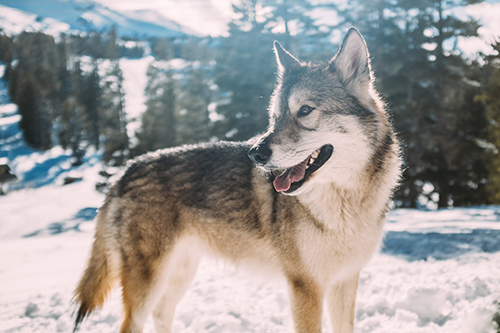
- Height; 22 to 23 in.
- Weight; 40 lbs. to 50 lbs.
- Life Expectancy; 12 to 16 years
- Ease of Training - The Seppala Siberian Sleddog is an Artic breed of dog who has an unnerving wolf-like appearance. Beautiful in appearance, it is their ability and their work ethic that is more important to owners than their looks. The Seppala has evolved into a pack dog, who is content to work collaboratively with a team of dogs to achieve what their owner requires them to do. They are medium to large, with well developed shoulders, neck and chest which has developed through their work over the ages of hauling sleds. Long sturdy legs and a long tail that may be curled over their back when excited differentiates this dog from the Siberian Husky, from whom they were considered the same breed. But as the Husky developed for the show room where looks were important, the Seppala was kept separate to maintain their strength, skills and ability in the frozen Arctic regions. Now they are considered two different breeds of dogs. The Seppala has an elongated head, lovely almond eyes that can be brown or blue, and they have a neat black muzzle. Their thick dense double coats protect the dog from the cold, and their alert pointed ears don't miss a trick. They are alert, beautiful, elegant dogs that are devoted to their owners and family.
- Energy Level - The Seppala Siberian Sleddog is a working dog by nature. They need that workout and purpose each day to be at their best. Intelligent and alert, they can get bored easily. This energy and drive are why they make an ideal work dog – and work prevents bad habits from getting a hold. The Seppala is a rare primitive type of working dog and was created specifically to haul a sled through a cold, treacherous country. This breed is never aggressive, not even to strangers, although they will bark to make their owner aware of people on their home turf. The beauty of this wolf-like dog is their affectionate nature; they are quite docile and gentle. The Seppala forms strong bonds with their master, always willing to cooperate with them and their family. They also bond strongly to other dogs in their group, enjoying their company and co-existing peacefully. The Seppala Siberian Sleddog has the determination and high work ethic that keeps them going even in the appalling weather. Friendly, alert and keen by nature, this is one dog that has been saved from extinction through careful management so that we could all enjoy their beauty and exceptional skills.
- Grooming - The Seppala Siberian Sleddog has a beautiful coat that protects them from the icy weather. They are truly beautiful and majestic dogs! However, they do shed that lovely coat twice a year, and when they do, you could stuff a bed with the hair that they shed. So be prepared to brush your dog each day, and leave your vacuum on standby! Apart from that, the Seppala is easy to maintain. They rarely need a bath, which can be a mission to achieve. If a bath is necessary, use a mild dog shampoo to protect the oily coating on their skin and fur which helps them to withstand the extremes of the weather. Getting them dry on a cool day may need the use of your hair blow dryer! Other than that, just a brush of the teeth, a check of their feet for injury or long toenails, and a flick of a damp cloth in each ear and they are done! They will love the attention and race off to show their buddies how cool they look afterwards.








